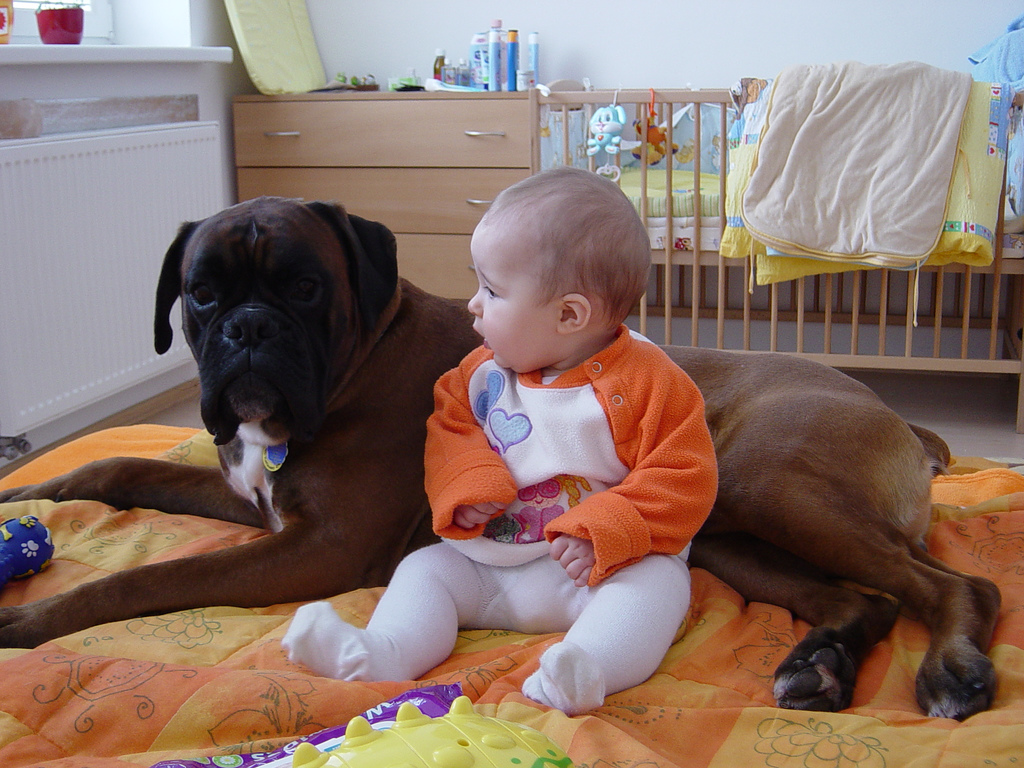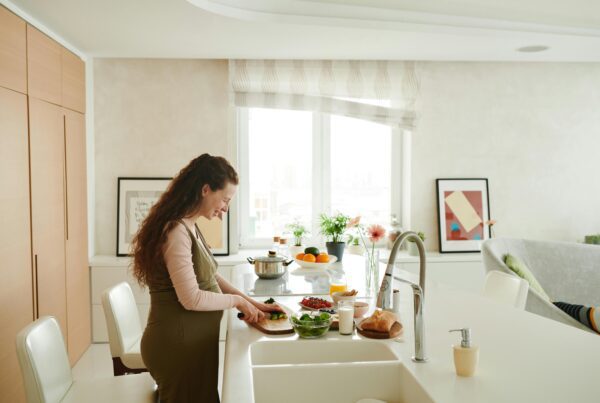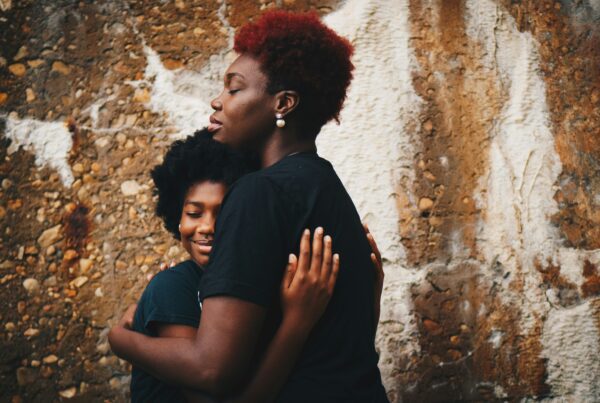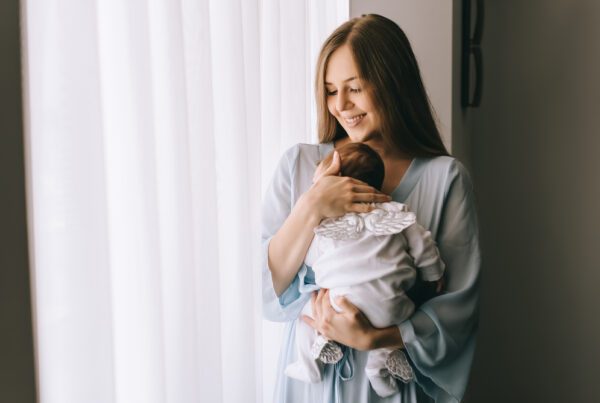Our dogs are like our children. We love them, raise them from puppies, nurture them, feed them, and care for them. Then we have a real baby! One of the worries our soon-to-be mommies talk about is how to introduce their dog to the baby, and more importantly, what if the dog doesn’t like the baby! We adore our dogs and we love our new babies, so how do we make sure that’s a smooth transition? Preparation!
Dogs are pack animals, and you and your significant other are the leaders of their pack. Dogs can be suspicious when a new pack member comes into the mix, so it’s important to start preparing your dog for baby’s arrival as soon as possible. It’s never too early, and if you don’t have the time, it’s still not too late to prepare your dog after the baby arrives.
Did you know that a dog knows you are pregnant and in labor before you do? They smell the change in your hormones, notice changes in your mood, and see your behavioral changes. With all of these things occurring they become very protective. Something to keep in mind when you have a new baby is your dog has feelings! For instance, they might become depressed or over-reactive.
What you don’t want is the dog developing unwanted behaviors, such as dominance. Let’s look at some things you can do to get Rover ready for the baby:
- Make gradual changes to your dog’s routines. This can be little things, like a change in where your dog sleeps or when he gets walked. Do this before the baby comes home so your dog will not associate the changes with the baby.
- Go through the baby’s routine before the baby arrives. This includes changing, feeding, rocking and walking with an empty stroller.
- Lessen the amount of play and attention you give your dog for two to three weeks before the baby comes home. You do not want to “last minute” lavish your dog with affection, only to have it stop when the baby comes home.
- Play a tape recording of various baby sounds in your house for increasing lengths of time so your dog can adjust to the new sounds before you bring the baby home.
- Acclimate your dog to baby smells, including lotion, powder, etc. Once the baby is born, bring an article of the baby’s clothing or a baby blanket home so the dog can get used to the infant’s scent.
- Before baby arrives, teach your dog to “go to place.” You can use any mat, bed, or defined area to teach this behavior, and it is easily transferred to other locations. Stand beside the bed or area you want your dog to go. Point to the area, praise as soon as your dog is on his place, and reward him with treats. Use a release command like “Okay!” and toss a treat to encourage your dog to come off the mat. When your dog learns where his place is, add a “sit” or “down” command. Use “place” to mean go where I point and then “sit” or “down.” Gradually increase the length of time the dog stays on the bed and give your dog something rewarding on his place, like a chew toy.
Now that you have done some initial prep work with your dog before you bring home your baby, let’s look at some things you can do when you bring your baby home.
- When you arrive home with your baby, first greet your dog alone so he doesn’t get excited and jump on the baby.
- Allow your dog to adjust to the smell, sight, and sound of the baby for a few days before introducing them in closer proximity.
- After a few days, allow your dog to sniff the baby while controlled on a leash. Pet him and give him praise while he sniffs. Most dogs adapt easily, but always take precautions. Always allow your dog to approach you and the baby and. Allow your dog to choose to interact with the baby, this prevents bites.
- Once your dog is used to the baby’s smell allow your dog to sniff the baby off leash. Your dog may react differently if the baby suddenly screams, cries, or kicks. Interpret these signs as an invitation to play or as a warning.
- When interacting with your dog and baby, keep your baby elevated and make sure an adult is between them at all times. Utilize a dog-adult-baby seating order.
- Give your dog plenty of attention when your baby is around. You don’t want him to decide good things only happen when your baby isn’t around.
- Don’t scold your dog for picking up the baby’s toys. You don’t want the smell of your baby being associated with anything negative. Simply replace the child’s toy with the dog’s toy.
- Babies change quickly, and it can be difficult for the dog to adapt as quickly. Once your baby begins to crawl, make sure that he/she doesn’t pull on your dog’s tail or ears. Snapping and growling are natural canine behaviors when they are trying to communicate a warning. Even the most tolerant dog has his limits!
- Never leave even the most trusted dog alone with a baby or small child!
- Have “safety zones” for the dog. A safe zone is a private space – a crate, a bed, a gated laundry room, etc. where he or she can get away when the activity is too much for him. Children should not be allowed to “invade” the dog’s private space.
- It is okay to keep the dog out of the baby’s room with a gate, etc., especially if he is curious and attempts to jump on the crib or changing table.
You can have a wonderful life with your fur baby and your new baby. It just takes a bit of preparation beforehand. Remember, your dog will be loyal and your baby’s best friend for many years if you handle the introduction well!



